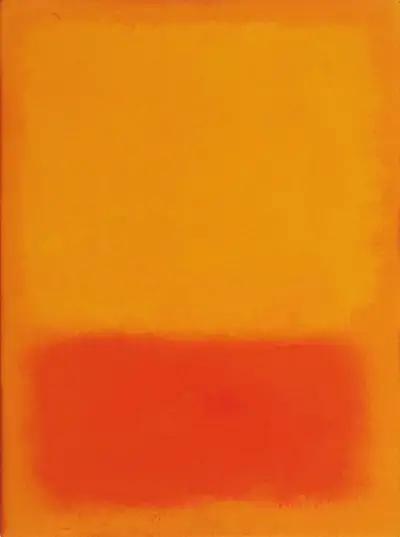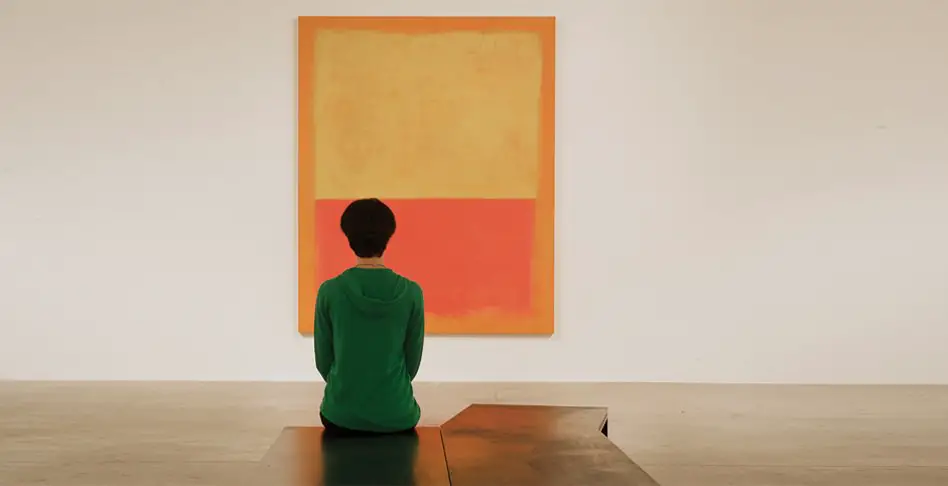At different times during the 1950s and 1960s, Rothko produced a substantial quantity of small works on paper. It is not certain whether these are studies for larger paintings or simply smaller variations employing a similar dynamic of form and color. The artist had many of them mounted on panel, canvas, or board in order to simulate the presence of unframed canvases. The smaller format especially suited Rothko in 1968, when his physical activity was dramatically curtailed by a heart ailment. Rothko continued to work predominantly on paper even after he returned to a relatively large format in 1969. He would attach them onto large canvases once complete so that they could be hung in the same way as his work in other mediums, as well as protecting them more effectively.
The tones of orange and yellow feature frequently throughout Rothko's work within the Color Field movement. It was this brightness that perhaps made it so popular with the public, who saw it as a natural extension of earlier movements such as German Expressionism and French Impressionism. You will see similar colours again in some of his other famous works, including the likes Orange, Red, Yellow, Orange and Yellow and Untitled (Red). It will surprise many that Rothko's last work was not only about darkness and depression, but that there was also a large number of bright paintings to be found here too, which slightly goes against the belief that Rothko was retiring to a more and more negative mindset as he approached his last days. There is some truth in that, but he did swap between the two palettes more than many realise.
This painting can be found in the collection of MoMA in New York, USA. They have an impressive selection of contemporary art from the 20th century which ranks competitively against any other venue in the world. You will find a number of Jackson Pollock paintings and drawings here, for example, plus around 19 items from Rothko's own career in total. They continue to acquire new items all the time and have most of the major names featured somewhere within their huge display, with much more besides stored away. You will also find some Georgia O'Keeffe paintings here as well, with some of her best known works featured. All in all, this is a key gallery internationally for those interested in the more modern art movements, with a display focus on the late 19th century up to the end of the 20th century.


